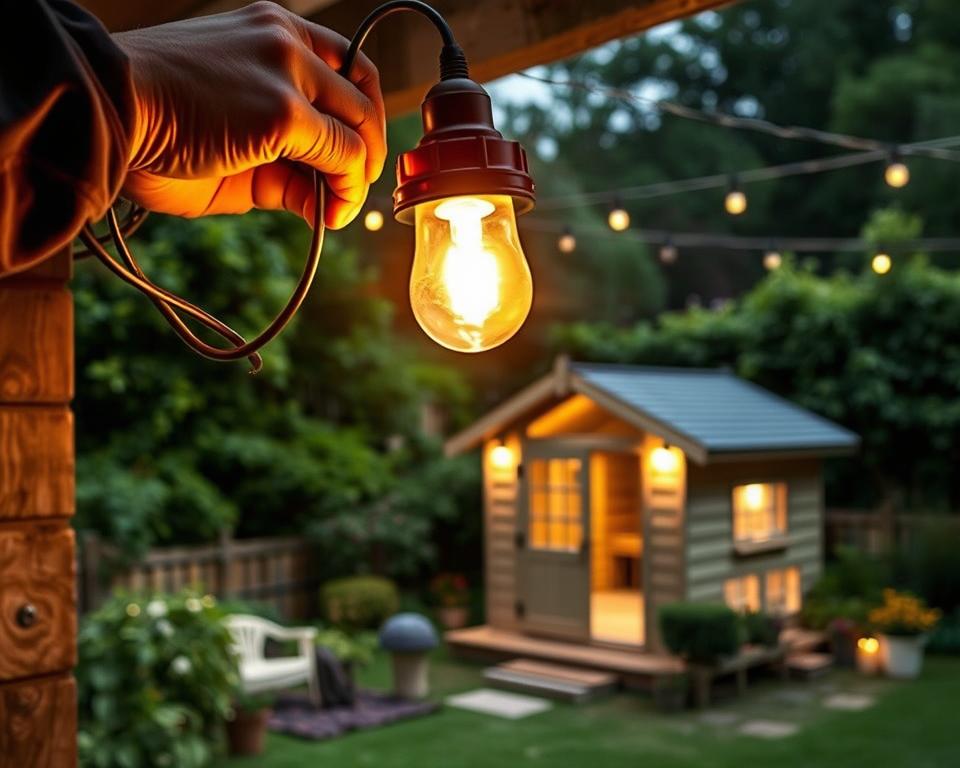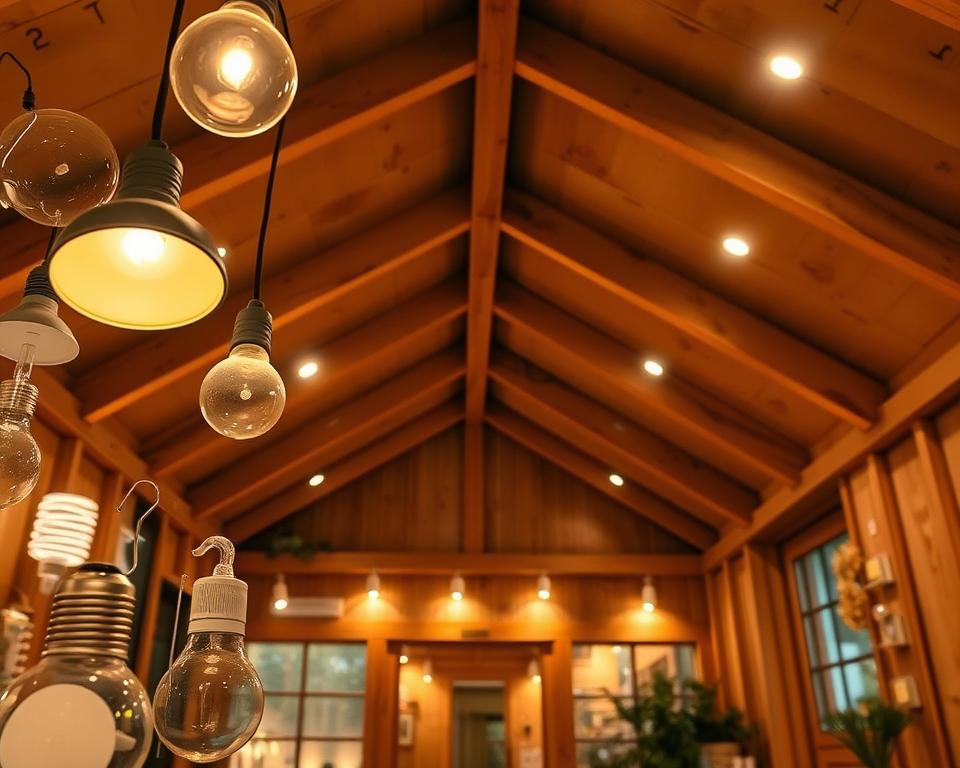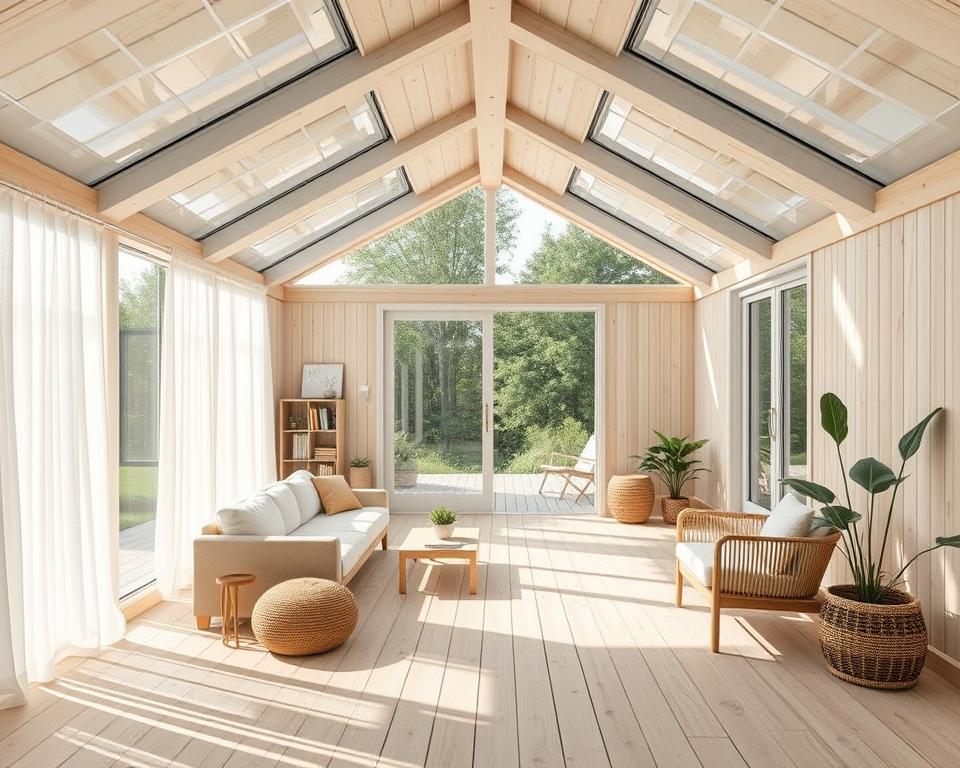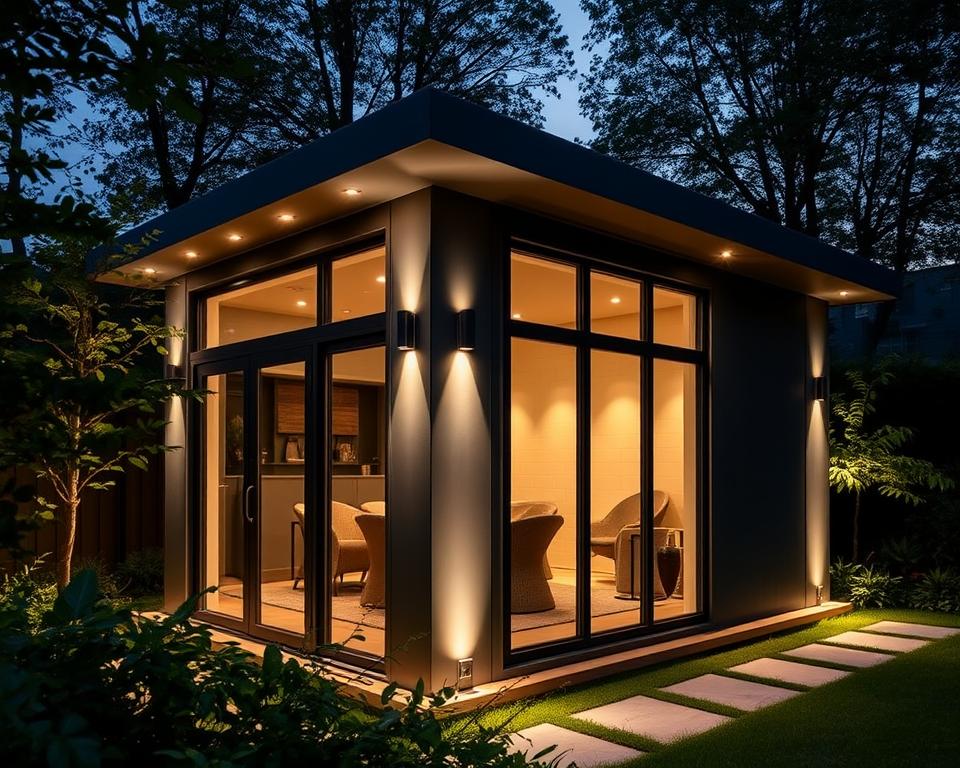How to Light a Shed, Summerhouse or Log Cabin

Transforming your garden structure into a welcoming retreat starts with thoughtful lighting design. Whether you’re converting a basic storage area into a workspace or creating a cosy evening sanctuary, effective illumination enhances both practicality and atmosphere.
Three core approaches dominate outdoor lighting strategies: harnessing daylight, installing electrical fixtures, and using solar-powered solutions. Each offers distinct advantages depending on your budget, environmental priorities, and how you intend to use the space.
Proper illumination becomes particularly crucial during darker months or late-night use. Well-planned lighting prevents accidents, supports focused work, and creates inviting environments for relaxation. It also extends the functional life of your garden building by making it accessible year-round.
This guide explores energy-efficient installations, design considerations for different structures, and clever ways to blend aesthetics with functionality. You’ll discover how strategic placement and modern technologies can turn even compact spaces into multi-seasonal assets.
Inhaltsverzeichnis
Key Takeaways
- Three primary lighting methods suit different budgets and garden structure types
- Effective illumination enhances safety during evening use and winter months
- Strategic planning maximises both visual appeal and practical functionality
- Solar options provide eco-friendly solutions without wiring complications
- Layered lighting approaches adapt spaces for work, storage, and relaxation
- Weather-resistant fixtures ensure year-round reliability in outdoor settings
Understanding the Lighting Options
Selecting appropriate illumination for garden structures balances practicality with visual charm. Three core solutions – natural, electric, and solar – each bring unique advantages depending on your needs and property layout.
Exploring Natural Light Benefits
Sunlight remains the most cost-effective way to brighten spaces while boosting mood and focus. South-facing windows capture maximum daylight, especially in summer months. Skylights add overhead brightness without compromising wall space, creating airy interiors that feel connected to outdoor surroundings.
https://www.youtube.com/watch?v=84ykvVzKUYI
Strategically placed glazing reduces reliance on artificial sources during daytime use. Frosted glass maintains privacy in cabins near boundaries, while sliding doors enhance access to garden views.
Artificial and Solar Lighting Essentials
LED fixtures dominate modern installations due to their energy efficiency and longevity. A 15W bulb sufficiently lights compact storage areas, while 30W versions illuminate larger summer house interiors. Consider lumen output rather than wattage when comparing brightness levels.
Solar-powered systems offer wire-free convenience through photovoltaic panels. These eco-friendly options work best in sun-drenched locations but may require backup solutions during cloudy spells. Combine different lighting types for adaptable schemes that function year-round.
Planning Your Lighting Layout
Crafting the perfect lighting scheme begins with smart spatial planning. Consider how you’ll use each area – a workshop demands bright task lighting, while a leisure space benefits from softer ambient glow. Measure your room dimensions and map out zones for different activities.
Assessing Room Usage and Space
Storage areas need simple illumination for safe access, typically 100-200 lumens per square metre. Creative workspaces require 300-500 lumens for detailed tasks. Multi-functional cabins benefit from layered lighting – combine overhead fixtures with adjustable lamps.

Positioning Windows and Skylights
South-facing glazing captures sunlight throughout the day, reducing artificial light needs. Pair large windows with thermal mass elements like stone floors to store solar heat. Roof overhangs block harsh summer rays while welcoming winter sunshine.
Skylights transform compact spaces by flooding them with natural brightness. Position them above seating areas or worksurfaces for maximum impact. Remember: every square metre of skylight provides about three times more light than vertical windows.
How to Light a Shed, Summerhouse or Log Cabin
Proper illumination setups transform garden structures into functional spaces while maintaining their rustic charm. Before grabbing your toolbox, consider these practical steps to ensure safe, efficient installations tailored to your building’s unique needs.

Preparation and Safety First
Begin by evaluating your power source. Battery-operated LEDs suit occasional-use spaces, while wired systems better serve daily-use summer houses. Always switch off mains electricity before handling wiring. For timber cabins, check wall stability – kiln-dried wood below 18% moisture prevents future fixture loosening.
| Task | DIY-Friendly | Professional Needed |
|---|---|---|
| Battery lights | Yes | No |
| Solar panels | Yes | Rooftop mounting |
| Mains wiring | No | Yes |
Metal structures require conduit protection for cables, while composite materials need heat-resistant fixtures. Position switches near doors for easy access. “Measure twice, drill once” applies particularly to tongue-and-groove walls in log cabins to maintain weatherproofing.
For multi-zone lighting, use colour-coded cables. Conceal wires along roof beams or beneath flooring in summer house designs. Test each circuit before final mounting. Remember: certified electricians must handle any connections to your home’s consumer unit.
“Proper cable management isn’t just tidy – it prevents 40% of outdoor lighting faults.”
Struggling with flickering lights? Check connections for moisture ingress first. Still issues? Consult a professional to avoid compromising your garden building’s electrical safety.
Efficient Energy-Saving Lighting Solutions
Modern advancements in lighting technology offer game-changing efficiency for garden structures. Savvy owners now combine cutting-edge LED systems with renewable energy sources to create sustainable, cost-effective illumination.

LED and Renewable Energy Options
LED fixtures slash energy use by 85% compared to old incandescent bulbs. A typical 8W LED provides equivalent brightness to a 60W traditional bulb, lasting 25 times longer. For a medium-sized summer house, switching to LEDs could save £45 annually on electricity bills.
| Lighting Type | Annual Cost | Lifespan |
|---|---|---|
| Incandescent | £18.25 | 1,200 hours |
| CFL | £4.50 | 8,000 hours |
| LED | £2.75 | 25,000 hours |
Solar systems range from simple path lights to full off-grid setups. Roof-mounted panels can power multiple fixtures in log cabins, storing energy in batteries for night use. Motion sensors reduce consumption by 30% in storage spaces visited occasionally.
Many councils offer rebates for solar installations – check local schemes before purchasing. Start with key areas like workspaces, then expand. “Upgrading one fixture monthly spreads costs while building towards complete efficiency,” advises Energy Saving Trust.
Remember to recycle old CFL bulbs safely due to mercury content. For garden buildings used year-round, combine LEDs with smart timers and thermal curtains for maximum savings.
Integrating Design with Natural Ambience
Blending architectural elements with natural surroundings creates inviting garden spaces that shine day and night. Clever design choices amplify sunlight while maintaining thermal comfort, turning structures into bright retreats that feel connected to their environment.

Architectural Features That Enhance Brightness
Traditional wooden summer houses with apex roofs pair steep angles with expansive glazing. This classic approach bathes interiors in sunlight while preventing snow buildup in winter. Contemporary pent-roof designs use sleek double doors and floor-to-ceiling windows to merge indoor-outdoor spaces seamlessly.
Corner structures make smart use of outdoor space with wrap-around glazing. Side windows spanning two walls capture morning and afternoon light simultaneously. For privacy concerns, frosted glass or strategic planting maintains openness without sacrificing seclusion.
Interior Tricks for Light Amplification
- Pale colour schemes reflect 80% more daylight than dark tones
- Mirrored surfaces opposite windows double perceived brightness
- Glossy worktops bounce light into shadowy corners
Roof lanterns in traditional designs add overhead illumination without structural changes. In modern cabin summer houses, sliding glass panels create adaptable openings that welcome summer breezes. Remember: window frames account for 15-30% of glazed areas – slim profiles maximise visible light.
Externally, low-voltage path lights guide evening visitors while showcasing garden features. Uplighting trees near windows creates dappled shadows that dance across interiors at sunrise. For year-round appeal, install adjustable blinds to control glare during peak summer months while retaining winter sunlight.
Customising Lighting for Multi-Functional Spaces
Modern garden buildings shine brightest when their lighting adapts to changing needs. Clever designs now let owners switch between work modes and relaxation settings with simple adjustments. The secret lies in layering different light types for varied activities.

Adapting for Workshops, Storage, and Leisure
Workshop zones demand focused task lighting. Install 500-lumen LED strips above workbenches for detailed projects. Pair these with adjustable desk lamps that tilt for precision tasks. Safety lighting along walkways prevents accidents when carrying tools.
Storage areas benefit from instant illumination. Motion-activated spotlights in side sheds save energy during brief access periods. For seasonal items, waterproof strip lights under shelves make contents visible without glare.
Create a relaxing retreat with warm 2700K LEDs behind roof beams. Dimmable options let you soften lighting for evening reading. “Layer three light levels in leisure spaces – 50 lux for ambiance, 200 lux for socialising,” recommends lighting designer Clara Mears.
| Area | Light Type | Recommended Brightness |
|---|---|---|
| Workshop | Task lighting | 500-800 lumens |
| Storage | Motion sensors | 200-300 lumens |
| Leisure | Dimmable LEDs | 50-200 lux |
Zoned systems prove essential in corner summer houses with multiple uses. Track lighting allows repositioning as needs evolve. Consider separate switches for each area – craft stations shouldn’t share circuits with reading nooks.
Portable solutions like battery-powered lamps offer flexibility. Cluster them around seating areas during summer gatherings, then move to storage zones for winter organisation. Smart bulbs let you save favourite settings for different ways use the space.
Conclusion
Well-planned lighting turns garden buildings into year-round assets that boost property appeal. By blending natural brightness, efficient LEDs, and solar solutions, you create versatile spaces ready for work or relaxation. Summer houses and log cabins particularly benefit from layered schemes that adapt to changing needs.
Remember: daylight maximisation cuts energy use, while professional wiring ensures safety in wooden summer structures. Many upgrades require no planning permission, letting you enhance your garden retreat quickly. Start with motion-activated LEDs or solar path lights for instant improvements.
Quality installations pay dividends through extended usability and potential home value increases. For complex projects, certified electricians handle interior circuits safely. Yet plenty of DIY-friendly options exist – battery lamps brighten corners without wiring hassles.
Prioritise weather-resistant fittings to withstand British weather. As needs grow, add smart controls or extra fixtures gradually. Energy-saving choices like solar panels slash bills while reducing environmental impact.
Your garden building deserves lighting that matches its potential. Whether crafting a cosy cabin nook or a functional workshop, thoughtful illumination unlocks days of enjoyment. Begin with one upgrade this weekend – small changes make big differences in how you experience these special spaces.
FAQ
What’s the best mix of lighting for a garden building?
Combining natural light with energy-efficient artificial options works brilliantly. Large windows or double doors maximise daylight, while solar-powered or LED fixtures provide reliable illumination after dark. This balance keeps energy costs low and enhances the space’s ambience.
Do I need planning permission to add windows or skylights?
Generally, garden rooms like summerhouses or log cabins fall under permitted development, but rules vary. Always check local guidelines, especially if modifying roof structures or installing large glazed areas. For peace of mind, consult your council’s planning portal before starting work.
How can I make a log cabin feel brighter without extra fixtures?
Positioning mirrors opposite windows reflects natural light beautifully. Opt for light-coloured interior paints and minimalist furniture to avoid visual clutter. Sliding glass doors or roof lanterns also amplify brightness while maintaining a cosy, airy feel.
Are solar lights reliable for year-round use?
Modern solar lights perform well in most weather, though winter sun exposure may affect charging. Pair them with battery-powered LEDs for cloudy days. Brands like Philips or Ring offer weather-resistant designs ideal for sheds or outdoor spaces.
Can lighting adapt for both workshops and relaxing retreats?
Absolutely! Use adjustable track lighting or dimmable LEDs for task-focused areas like workbenches. In leisure zones, warm pendant lights or wall sconces create a calming vibe. Smart bulbs let you switch modes effortlessly via an app.
What’s the ideal way to light storage areas in a shed?
Motion-sensor LED strip lights are perfect for sheds. They conserve energy and activate when needed, illuminating shelves or corners without switches. Waterproof options ensure durability, even in damp conditions.

